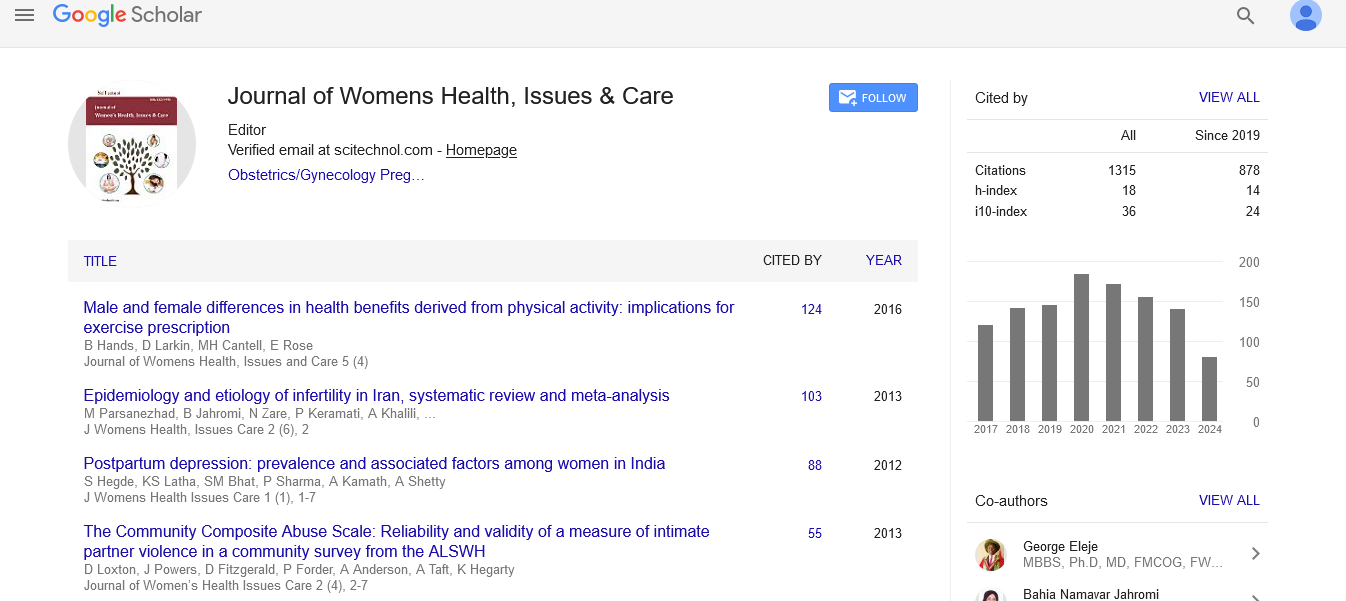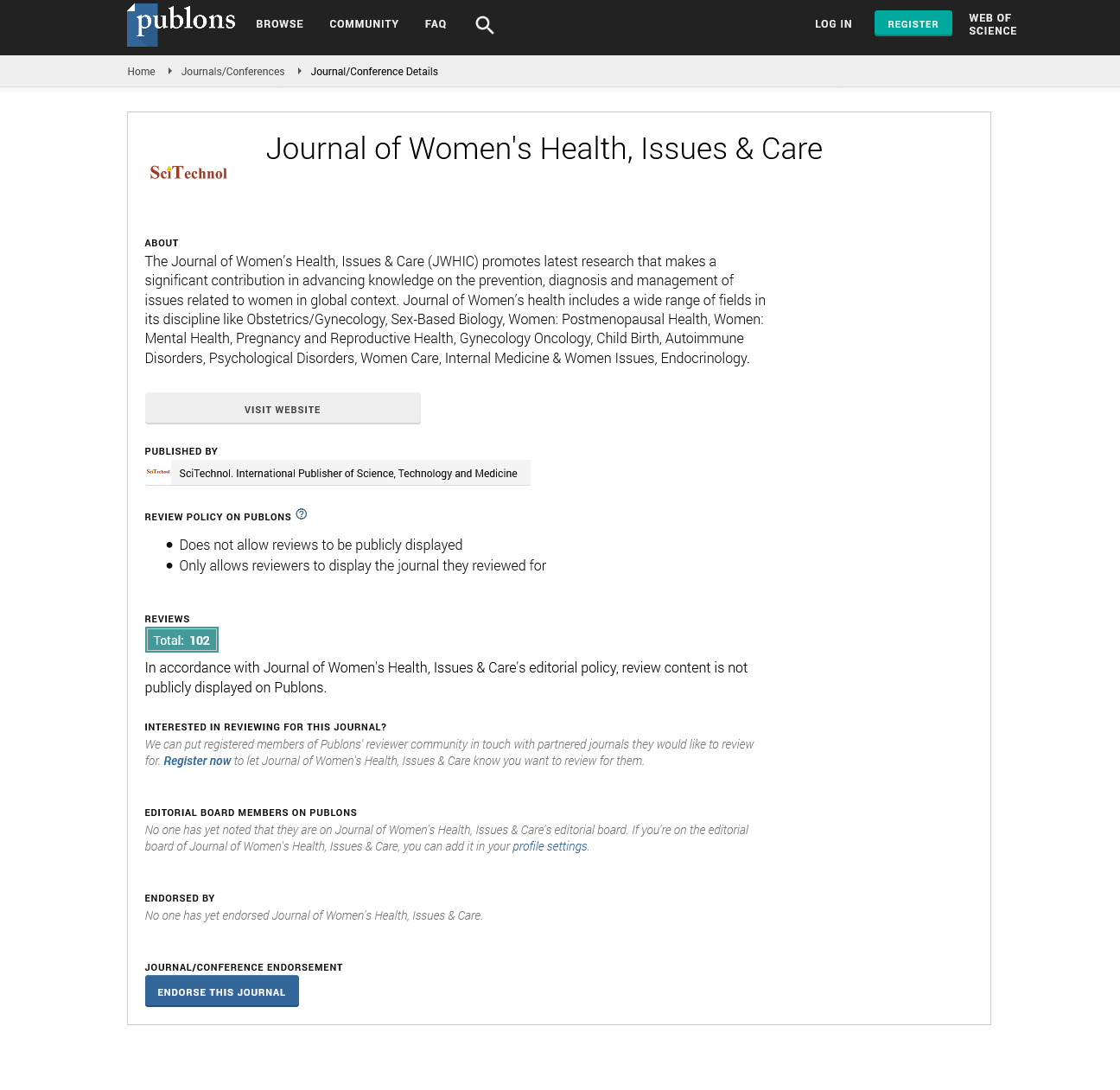Research Article, J Womens Health Issues Care Vol: 7 Issue: 3
Knowledge, Attitude, and Practice of Family Planning Methods among Married Men and Women
Sonia Sultan1*, Mahvish Mansoor Ali2, Sana Sadruddin Bardai2, Muhammad Adnan Kanpurwala3 and Farahnaz Shoukat Ali Punjwani2
1Robert Morris University, Illinois, USA
2The Indus Hospital, Karachi, Pakistan
3Karachi Institute of Medical Sciences, Pakistan
*Corresponding Author : Sonia Sultan
Robert Morris University, Illinois, USA
Tel: 1-630-480-1530
E-mail: bhamani_sonia@yahoo.com
Received: April 17, 2018 Accepted: May 15, 2018 Published: May 21, 2018
Citation: Sultan S, Ali MM, Bardai SS, Kanpurwala MA, Punjwani FS (2018) Knowledge, Attitude, and Practice of Family Planning Methods among Married Men and Women. J Womens Health, Issues Care 7:3. doi: 10.4172/2325-9795.1000311
Abstract
Abstract Objective: The objective of this study was to assess the knowledge, attitude, and practice of family planning methods among the married men and women in Pakistan. Methodology: A quantitative study using a descriptive crosssectional design was conducted in a community located in one of the urban areas of Karachi, Pakistan from October 2014 to December 2014. Two hundred participants were recruited, including 72 men and 128 women who were interviewed regarding their knowledge, attitude, and practices of family planning methods through a predesigned questionnaire. A two-stage sampling technique was used including systematic and convenient sampling to collect the data. Women with infertility, non-reproductive age (49 and above), widows, and widowers, separated and divorced individuals were excluded from this study. Results: Mean age of the participants was 30 ± 3 years. Results of the study showed that majority of the participants had knowledge of few contraceptive methods, but they lack awareness about all the family planning methods. Among men (100%) and women (97.7%), the most common method known was a male condom. Private hospitals and internet appear to be the key sources of information related to family planning. Regarding the practice of family planning methods, 54% of men and women were using few contraceptive methods. 74% men and 71.3% women had positive attitudes regarding family planning methods. The most common reasons for not using family planning methods among men and women were fear of side effects and desire of a male child. Conclusion: The study concludes that most of the men and women have the comprehensive knowledge and assertive attitudes regarding the use of contraceptive methods, however, the practice of family planning methods is still low.
 Spanish
Spanish  Chinese
Chinese  Russian
Russian  German
German  French
French  Japanese
Japanese  Portuguese
Portuguese  Hindi
Hindi 



